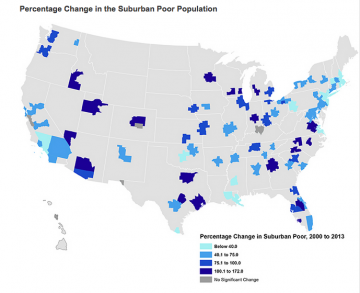Suburban Poverty Grows in Portland by More Than 75 Percent
Wednesday, October 01, 2014

Despite improving employment numbers, the nation’s 100 largest metro areas are continuing to experience rising levels of poverty, according to a new analysis of census data by the Brookings Institute.
Over the last 13 years the poor population in the 100 largest metro areas grew by 10 million, or 3.4 percent, with the suburbs experiencing more than two-thirds of that increase.
Sun Belt regions such as Austin, Atlanta, Cape Coral, Fla., and Las Vegas – all widely affected by the collapse of the housing market – witnessed the fastest growth rate in their suburban poor population.
Suburban poverty also grew significantly in Midwestern metro areas such as Grand Rapids, Mich., Indianapolis, and Milwaukee, after not having fully recovered from the 2001 downturn before the 2008 recession set in.
Of the 68 metro areas that have the available comparable data, 67 recorded significantly larger poor populations in 2013 than before the recession in 2008.
On a positive note, the poverty rate in these cities dropped slightly from 2012 to 2013, while the poverty rate in the suburbs remained unchanged.
Overall, only modest progress has been made toward reducing poverty towards its prerecession levels, with gains tending to happen in big cities as the suburbanization of U.S. poverty continues.
Banner Photo Credit: iStock




 Delivered Free Every
Delivered Free Every
Follow us on Pinterest Google + Facebook Twitter See It Read It